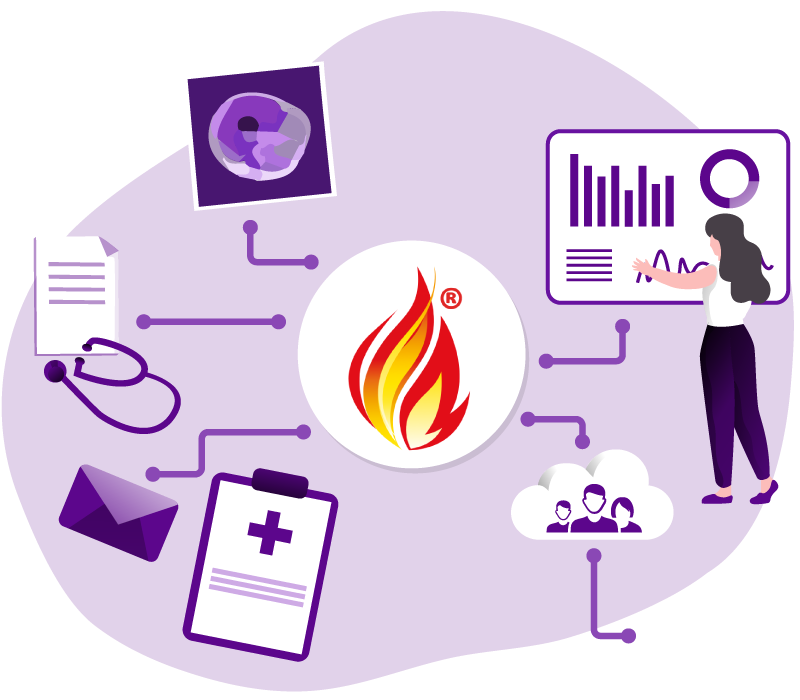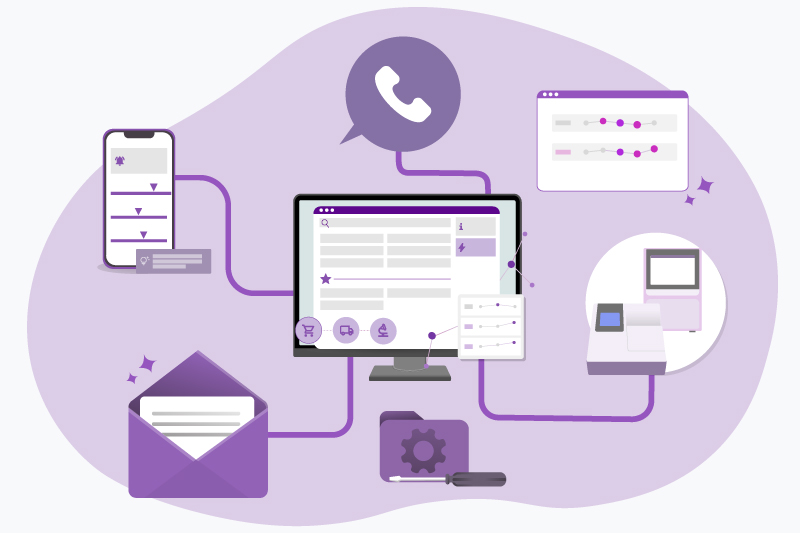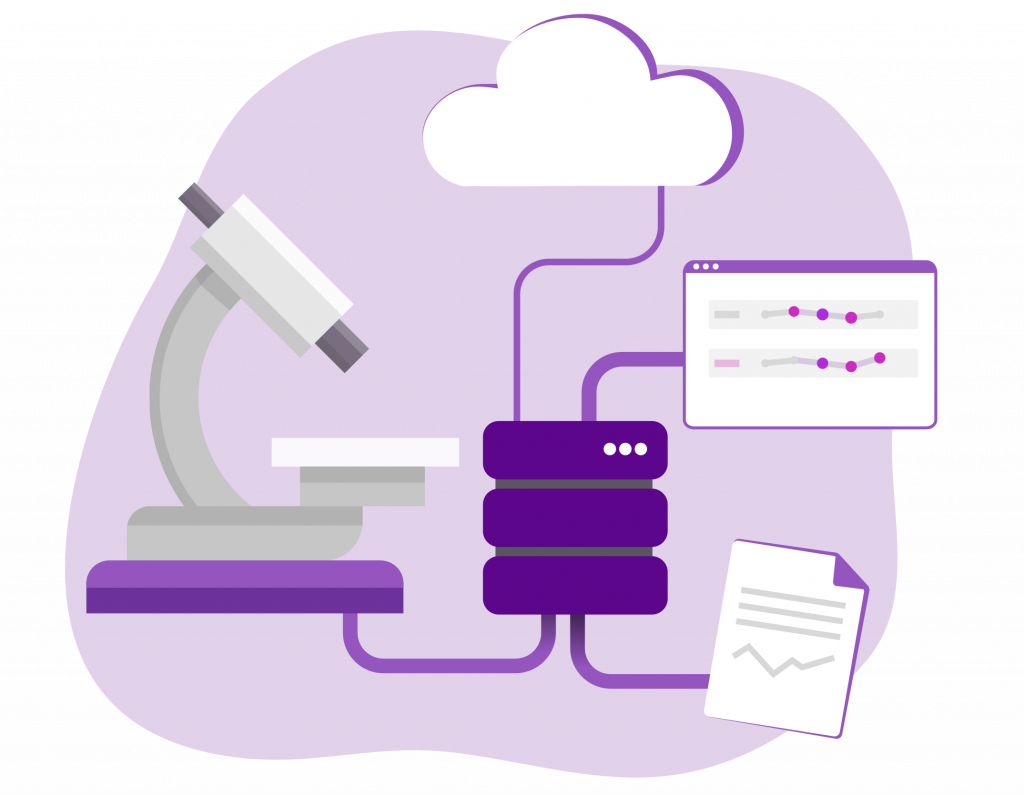Introduction
On May 3, 2022, the European Commission published a proposal for a regulation on the European Health Data Space (EHDS) [1], which underlines the importance of interoperability in medical services. As the IT channels increase in count, so does the need for seamless transmission and communication of patient information. Interoperability is essential in eliminating the organizational challenges for data flow, thus adding value to the healthcare system and delivering better patient outcomes. [2] This article explores the critical concepts of interoperability in diagnostics, the role of medical data standards such as FHIR, LOINC, and SNOMED, the potential benefits for the healthcare systems, and how standardization and harmonization can be achieved through the medicalvalues platform.
Interoperability in diagnostics
Digitized healthcare records (patient data, medical history, laboratory test results, etc.) must be accessed, shared, integrated, and cooperatively used by relevant stakeholders across the complete spectrum of care. However, modern healthcare systems are built on different, often inconsistent architectures, making the exchange of information slow or (in some cases) impossible. [3]
That’s where interoperability comes in. Interoperability is defined as “the ability of different systems, devices, applications or products to connect and communicate in a coordinated way”. [4] In other words, it ensures information compatibility and portability between these systems. And given the vital role of data in the effectiveness of patient care, efficiency in treatment, and sustainability in medical processes, interoperability in many ways is paving the way for the future of healthcare. [3]
Medical Data Standards
Over the years, several standards have been developed to adopt a unified format for documented data. Different standards are, in most cases, suitable for specific sectors in the healthcare system. Their use often depends on the geographic region and the rules set in place by the corresponding government. The function and benefits of popular standards frameworks, such as LOINC (Logical Observation Identifiers Names and Codes) and SNOMED CT (Systematized Nomenclature of Medicine — Clinical Terms), have been discussed in detail in previous articles. Information on LOINC and SNOMED CT can be found in the linked blog posts; the FHIR standards framework is introduced below.
Fast Healthcare Interoperability Resources (FHIR)
Fast Healthcare Interoperability Resources, also known as FHIR, is an open-source standards framework for healthcare data that succeeds a previous standards framework called HL7. FHIR organizes data into different classes (so-called “resources”), such as “patient”, “conditions”, and “medications” and provides a standardized structure for how that data is organized and interpreted by different computer systems or applications. This way, health data can be shared and integrated between different systems. [5]
Benefits for the healthcare system
Being one of the stakeholders most affected by the lack of communication and compatibility between different systems, the healthcare system also benefits the most from implementing interoperability. Standard frameworks that enable interoperability in the healthcare system drastically impact how data is shared, managed, mined, and integrated.
Easy Integration of Third-Party-Software
Third-Party data integration is one of the primary and most direct benefits of interoperability in the healthcare sector. Different institutions (such as hospitals, laboratories, research centres, etc.) structure data in their own way. Although this might work well with internal processes, it severely limits the institution’s ability to integrate third-party software (data management systems, analysis algorithms, etc.). FHIR ensures seamless integration of third-party apps, providing flexibility and freedom regarding which software or system will be implemented. [6]
Improvement in Clinical Treatment
Data sharing, mining, and integrating processes often occur in the background of medical treatment and diagnostic procedures. For this reason, their vital role in ensuring efficient and effective patient care is often underestimated. Medical records, diagnostic history, and patient biometric data are essential in creating a precise and accurate diagnosis. It follows that ensuring quick and easy access to Electronic Health Records by medical personnel and hassle-free integration in software applications (such as Clinical Diagnostic Support Systems) can significantly impact patient care, safety, effectiveness, timeliness, efficiency, and equity. [6]
Enhancement in Data Management
A standardized data format simplifies and optimizes data management in various ways. Firstly, it dramatically increases data availability in research or during the diagnostic process, as information from different sources is usable and available in real-time. Additionally, it provides solutions and necessary tools to manage and take advantage of the significant volume of available data. [6] A clear set of rules ensures data integrity, accuracy, and consistency. Harmonized data also clarifies ambiguous meanings, avoids interpretation errors, and minimizes redundant data. [3]
Benefits for Patients
The aforementioned improvements in clinical treatment do not constitute the sole benefits of standardized and harmonized data that patients get to experience. Interoperability also plays a vital role in granting patients control over the use and monitoring of their data.
Holistic Patient Experience
The transparency and intuitiveness of an implemented and integrated protocol empower patients, as it allows more straightforward access to and control over their data. With integrated and harmonized data formats, patients can choose how and what information they share with healthcare providers, thus increasing faith in the industry and giving them power over the decisions of their treatment. [6]
EMR Tracking
Until now, for patients to view their data, they would have to receive large data files, a CD, or a printout of disorganized information, which turns keeping up to date with one’s medical record into a hassle. [7] FHIR allows patients to get a clear-cut picture of their clinical data and provides excellent flexibility regarding the healthcare app or software they use. Apple’s Health app is a well-known example of data tracking software for users/patients and receives information from various EHRs and other health organizations using FHIR. [6]
Mapping Software
Although the benefits of enabling interoperability through implementing FHIR have been made clear, the actual process of manually mapping data to this standard remains (time-)consuming and error-prone. For this reason, medicalvalues introduces the FHIR Mapper, a semi-automized tool that allows faster, easier and safer mapping of patient data to the FHIR Format. The software utilizes specialized algorithms to generate suggestions for mapped and harmonized data; the user can then verify the results to ensure accurate and complete mapping.
Guide – Process Walkthrough
1. Upload your data file
Upload your data file in this window and set the parameters of the document structure and format (separators, language, headers) before letting the mapper analyze it. You can also continue working on files previously uploaded if their size and complexity warrant more than one mapping session.
2. Map column headers
Choose which object you wish to map (e.g. Observations, Encounter, Diagnostic Report, Patient) and match the columns to the corresponding headers. Automatic suggestions propose a computer-generated header-column map that can be approved or edited by the user, thus avoiding mistakes and ensuring mapping accuracy.
3. Map values (columns)
In this step, the values in the columns need to be mapped to the appropriate FHIR format. The mapper will create suggestions based on your data and the current FHIR standards. After choosing the proper format, cells in the column will be mapped accordingly. In case of ambiguity, the cells are marked with the value NULL and need to be mapped manually.
4. Export data
After the mapping process is completed, you are free to save or export your data to be used or shared with other applications. Additionally, you can upload your data to the medicalvalues FHIR store, which grants you access to additional tools for data analysis and optimization.
Next Step: Data Analytics
One of the most significant benefits of standardized and harmonized data is its compatibility with AI and data analytics methods, computer software, and knowledge graphs. After mapping your data and uploading it to the medicalvalues FHIR store, you can utilize these methods through our platform to gain valuable insights into your data and unlock their hidden potential. The medicalvalues platform offers immediate benefits, such as the visualization of your data in the form of a dashboard (you can read more about it soon on this website), as well as long-term competitive advantages, like the possibility to integrate additional software applications and interfaces. Data is undeniably changing how our healthcare and diagnostic systems function, and interoperability is paving the way for broader and more advanced future applications.




